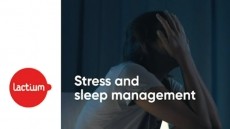From plant protein to goat milk protein, Naked Nutrition strips down sports supplements

Stephen Zieminski founded Naked Nutrition five years ago. “The brand is about taking something that should be simple, like ‘hey if I want to buy whey protein, why can’t I just buy whey protein,’” he told us.
When Naked Nutrition launched “most things in the market had 15 plus ingredients and crazy flavors and all these kinds of sweeteners and stuff,” he recalled.
It’s rare to see a Naked Nutrition product’s ingredient list go above five items. The original line-up of protein powders it launched with—Naked Whey, Naked Pea, Naked Rice, Naked Casein, and Naked Goat (we’ll get to this one later) all feature just one ingredient.
Betting on the clean label proposition
Before starting his own business, Zieminski lived in Manhattan doing mergers and acquisitions tax work for a Big 5 firm, and then at the Royal Bank of Canada’s investment banking group.
Nutrition and supplementation have long been an interest of his. He ran track and cross-country in college and started weight lifting while he was in law school.
Protein and creatine supplementation became part of his routine, and that’s when he noticed a gap in the market for simpler supplements.
“The analogy I use is: Farmer’s markets are becoming more and more popular, people want to know ‘this is where the vegetables came from, this is where the honey came from.’ Why aren’t supplement companies telling you where the products are coming from?” he said.
He decided he wanted to be his own boss and start a company.
He bootstrapped the Naked Nutrition with his own savings (“Back in 2014, Kickstarter and that kind of stuff was fairly new-ish”).
Now living in Miami, Zieminski runs Naked Nutrition from wherever he wants.
“It’s fortunate enough that I can do my work from pretty much anywhere,” he said. “I tend to work while I travel just because I like it.”
Going to grab-and-go formats
In the coming weeks, Zieminski is diversifying his brand’s portfolio by adding single-serve products, namely a line of protein bars and single-serve meal shakes. He thinks these launches will open up the brand to a new audience.
“The single-serve and convenience model is picking up,” he said. “With protein powders, there’s only a certain subset of the population that would use them. Protein bars hit a much larger demographic.”
This expansion into single-serve and RTE (that’s ‘ready-to-eat’ in industry speak) reflects an overarching trend in the sports nutrition space. Established brands like Optimum Nutrition are aggressively adding to their RTE line-ups, even tapping the convenience store channel as an important source of revenue.
“It really is what people like, so why not?” Zieminski added.
When everything is ‘clean label,’ how do you stand out?
Naked Nutrition isn’t alone in the sports nutrition set with a clean label proposition. There’s Ascent, which has nationwide distribution with Whole Foods Market for its free-from artificial ingredients protein powders. There’s also the plant-heavy brand Too Fit, which just joined PepsiCo’s inaugural Greenhouse Nutrition incubator.
Even big players like Gatorade are embracing the clean-label trend by launching ESSNTL, which has no added sugar or artificial flavors and colors.
Zieminski said that, even with more competition, his brand has a ‘first-movers advantage.’
“I’ve been doing this for over four years now, so we have a bigger audience and bigger reach than any other start-up,” he said. “So they’re working in an entirely different environment than I was working with in 2014.”
Goat milk and clear containers
Simplicity and transparency are the keywords that Zieminski wanted his brand to communicate. The tubs are transparent, allowing buyers to see the powder even before opening packaging.
There’s also the minimalist packaging design that, contrary to category convention, isn’t heavy on claims or neon colors or exclamation marks.
“The labeling, the branding, it’s so simple, we’re not shooting for an 18-year-old kid that just got into weight lifting or a 35-year-old mom that does yoga,” he said. “We created a blank canvas, and the buyer uses it however they want.”
Zieminski is also relying on quirkiness. Goat whey powder was one of the first products in the company’s line-up because it helped the brand get on people’s radar.
“If you are a vegetarian you can still take milk-based products, but a lot of people just generally have an issue with lactose, so the lactose in goat’s milk behaves much differently than it does in cow’s milk,” he explained. “So you won’t really get that bloating or stomach upset with goat’s milk as you would with cow’s milk.”
“The hard part is with goat is that it’s a niche product. Goat’s milk is not produced anywhere near the volume that cow’s milk is,” he added.
“For that reason keeping goats is just that more much difficult and the pricing of goat’s milk is higher. But at the same time, because there were very few people offering it, it was a fun way to get on people’s radar.”


















